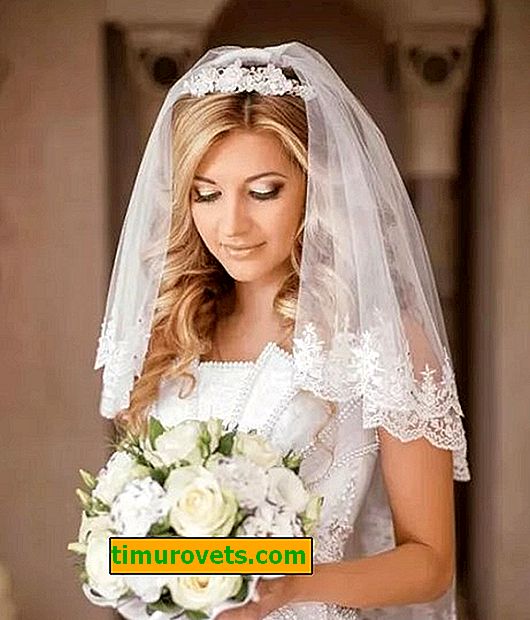
Many, not knowing the qualities of matter, are lost when choosing. Which one is better and what are the differences? Even professional seamstresses find it difficult to understand these materials.
Percale or satin - which is better and why

Seamstresses like to use percale for sewing bedding, bedding for pillows. Due to its dense structure, the material does not allow feathers to climb out of the pillowcase. It is comfortable to sleep on such linen. On hot days it cools the body, and on cold days it warms.
Satin is also woven from natural cotton. Use a complex weaving pattern. The result is a shiny and soft fabric. At the same time, the front side is glossy, and the inside is matte. Linen is also sewn from satin.
What is better to choose from these fabrics? Depends on consumer preferences.
What is the difference between satin and percale?
Both types of fabrics are made from quality cotton. They are very durable. Good color retention after washing. But there are still differences:
- by strength - the leader is percale. Withstands more washings - up to a thousand; Therefore, it will last longer. Satin is much softer and thinner. Therefore, it loses its qualities faster. Will transfer only up to three hundred washes. May lose color - fade.
- there are differences in the texture of the fabric. Percale is soft, with a velvety surface. Satin is a shiny and smooth material;
- sateen is more expensive;
- Satin is like silk. The interior looks more rich and brilliant. Percale is dull and slightly dull.
Satin Properties and characteristics

To increase the strength and color fastness, during manufacture, the threads are treated with acid and alkali. This process is called mercerization. The cost of the material increases. There are manufacturers who do not apply mercerization. As a result, not expensive satin is obtained. But he will not serve for long. The price is consistent with the quality.
It is used when sewing clothes, bedding, curtains, bedspreads. The positive properties are that the material does not deform after washing and ironing. Does not lose the brightness of the color. It is not an allergen. Therefore, it can be used for sewing children's clothes or underwear.
Satin Properties
Material properties depend on the quality of the raw materials, the processing of the threads and the weaving method.
- hygroscopicity. Satin is able to absorb moisture. That is, if in a dream a person sweats, he will not wake up from discomfort;
- thermal conductivity. The material retains body temperature;
- wear resistance. For a long time does not lose color and attractive appearance;
- not wrinkled. The fabric is easy to use. The folds lie evenly and beautifully. Often used for draperies.
disadvantages
The main disadvantage of satin is the complex processing. Sewing from it can be a professional with great patience. Bulk material. The edges of products are showered. It’s hard to cut.
Too smooth underwear. Many do not like to sleep on a slippery sheet.
Percale. Properties and characteristics

The surface is velvety to the touch. Before starting production perkali, the threads are impregnated with the mixture. This is a special mixture for impregnation, thanks to which, the fibers do not fray. The mixture is safe. She glues the threads together. This makes the material durable.
Percale properties
- durability. It will serve you for many years without changing the shape and color. Does not form spools.
- permeability. Passes air through the fibers. Allows skin to breathe;
- not an allergen . Percale is made from environmentally friendly cotton. Therefore, it does not cause allergies;
- unpretentiousness. It does not require special care. It is well washed even at low temperature.
- spots do not eat. Easy to iron;
- keeps heat;
- not electrified. Clothes will not stick to the body;
- does not fade in the sun. You can hang clothes on the street without fear for the picture.
Some manufacturers add synthetics or linen to the composition of matter. This improves its properties.
Percale is produced in Egypt, Pakistan, India. In Russia - in Ivanovo, they make bedding. Percale is used in industry and aviation. For household purposes. Sew household items - aprons, gloves. Use for embroidery.
disadvantages
Costly expensive fabric. But cheaper than satin. If polyester is added to the fabric, it can cause sweating. This does not happen with natural fabric.
Slightly reduced in size after washing.
Important: wash products from percale need only in soft water. Do not use strong means. Percale cannot be washed with bleach. This will destroy the canvas.
Summarize

Before buying, evaluate your capabilities and preferences. Think about what the fabric is for. To understand what is better to get and from what fabric to sew, evaluate their quality. Consider the pros and cons.
Opinions of consumers are different. Someone like the brilliance of satin, and someone likes matte percale. It is better to buy two sets of bedding from different fabrics. And evaluate their quality in practice. In the future you will know for sure what the differences between percale and satin are.








